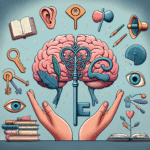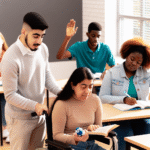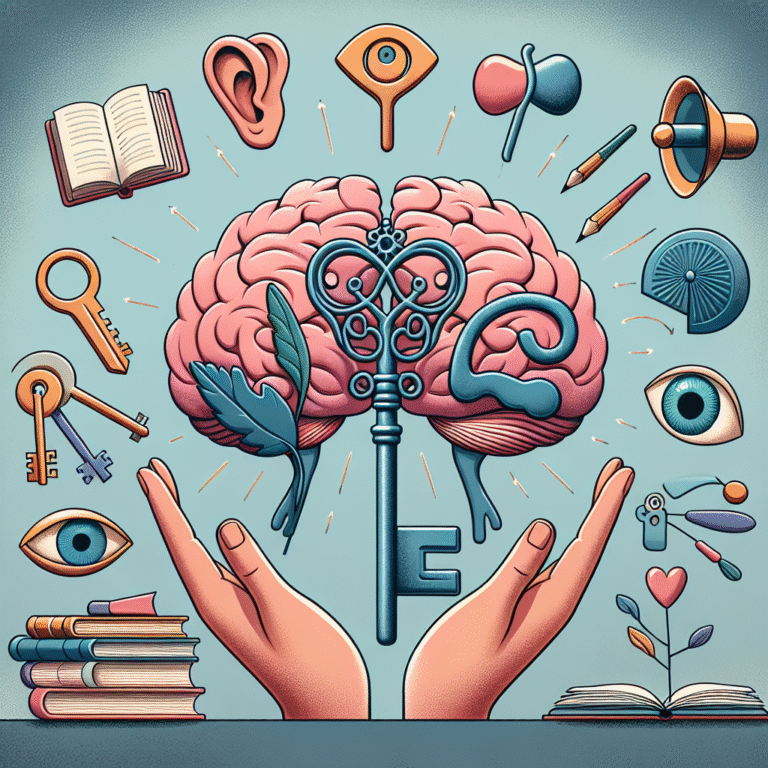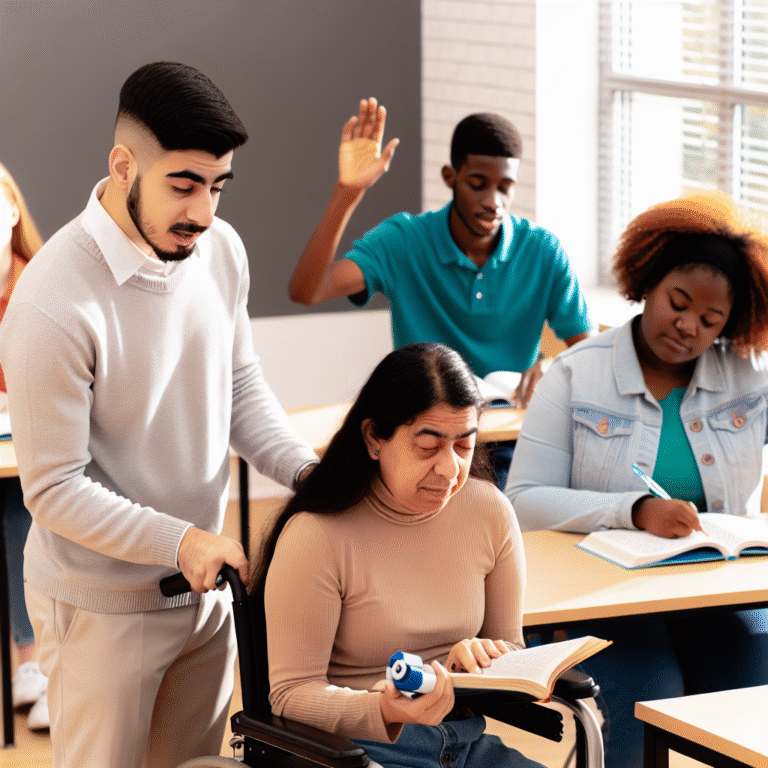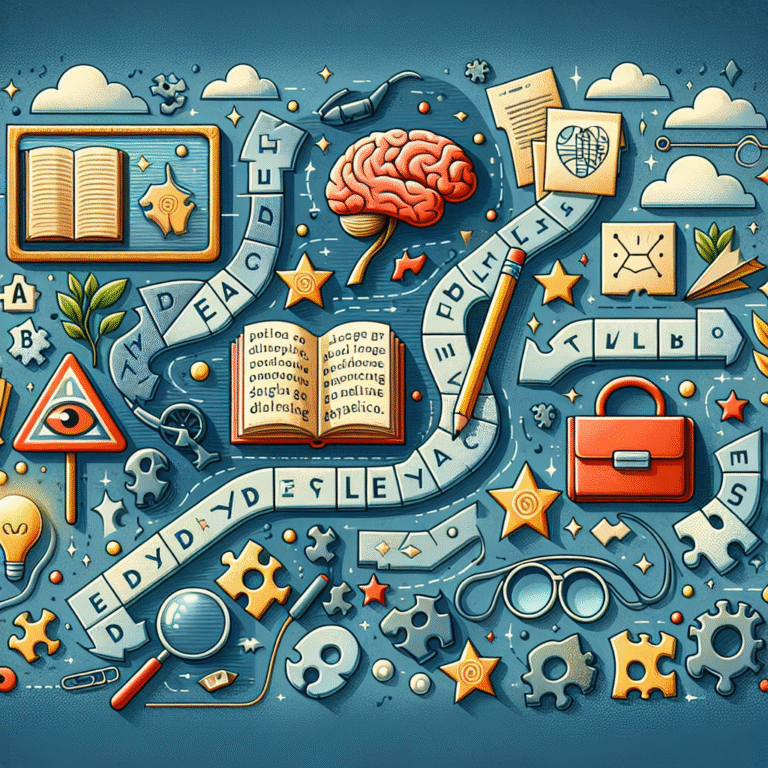
Reimagining the Classroom: Innovative Activity Modifications for Students with Learning Disabilities
Introduction
In today’s ever-evolving educational landscape, where diversity in learning styles and needs is more pronounced than ever, the demand for innovative teaching approaches has surged. "Reimagining the Classroom: Innovative Activity Modifications for Students with Learning Disabilities" is not just a catchy phrase—it’s a crucial call to action. Students with learning disabilities represent a unique population that often struggles to fit into traditional educational frameworks. By modifying activities and introducing innovative strategies, educators can create a more inclusive environment that fosters engagement, understanding, and success.
The traditional classroom model, characterized by a one-size-fits-all approach, often fails to address the varied needs of all students. This article delves deep into innovative activity modifications that empower both teachers and learners. We’ll explore real-life case studies, introduce actionable strategies, and discuss how these modifications not only benefit students with learning disabilities but enhance learning for all. Prepare to embark on a journey that reshapes the classroom experience and maximizes every student’s potential.
Understanding Learning Disabilities
What Are Learning Disabilities?
Learning disabilities (LD) encompass a range of disorders that affect how individuals learn, process information, or communicate. This can include difficulties in reading (dyslexia), writing (dysgraphia), and math (dyscalculia), among others. It is essential to recognize that learning disabilities are not indicative of a person’s intelligence. Instead, they highlight the critical need for tailored educational strategies to meet varied learning needs.
The Importance of Innovative Modifications
When we talk about "Reimagining the Classroom: Innovative Activity Modifications for Students with Learning Disabilities," we highlight the importance of adaptable and inventive educational experiences. Research shows that engaging students in multisensory learning experiences can significantly improve their retention and understanding. This not only supports those with disabilities but also enriches the educational experience for all students.
Innovative Activity Modifications
1. Multisensory Learning Techniques
Case Study: Trusty Rivers Elementary
At Trusty Rivers Elementary, teachers implemented multisensory learning techniques in their reading program. They employed tactile materials, visual aids, and auditory components. Teachers noticed that students with dyslexia demonstrated remarkable improvements in reading fluency and comprehension.
Analysis
The implementation of multisensory techniques—like incorporating physical objects to illustrate concepts or using technology to create engaging audio-visual presentations—can profoundly influence learning. By allowing students to interact with material through various channels, understanding deepens.
2. Flexible Grouping
Case Study: Maple Grove Middle School
Maple Grove Middle School adopted a flexible grouping strategy for its math classes. Teachers varied group assignments based on skill levels, interests, and social dynamics. Students reported feeling less pressure and more accepted when working in groups tailored to their unique profiles.
Analysis
Flexible grouping fosters a sense of community and collaboration among students. It allows them to engage at their own level, promoting confidence and motivation. For students with learning disabilities, this tailored approach can enhance peer interactions and academic outcomes.
3. Use of Technology
Case Study: Tech Innovators High School
At Tech Innovators High School, the use of tablets and educational apps transformed the learning experience. The school integrated tools such as speech-to-text for writing assignments and interactive applications for math practice. Feedback from students indicates they felt more empowered and in control of their learning.
Analysis
Technology creates unique pathways for learning. Tools like educational apps not only engage students but also cater to varied learning styles. Incorporating technology into the classroom can help break down barriers for students with learning disabilities, providing alternative ways to grasp concepts.
4. Gamification of Learning
Case Study: Creative Pathways Academy
Creative Pathways Academy introduced a gamified learning approach into their science curriculum. By using game elements such as rewards, challenges, and competitions, students became more engaged in the subject matter. Results showed that students with ADHD demonstrated improved focus and retention.
Analysis
Gamification taps into students’ love for play. By integrating game mechanics into educational activities, teachers can motivate students to participate actively. This approach is particularly effective for students with attention challenges, drawing them into the learning process in an engaging way.
5. Personalized Learning Plans
Case Study: Sunshine High School
Sunshine High School embraced personalized learning plans for its students with learning disabilities. By collaborating with parents and students, educators crafted individualized strategies that included targeted objectives and tailored learning resources. Feedback from parents confirmed significant increases in student motivation and achievement.
Analysis
Personalized learning plans are key in "Reimagining the Classroom: Innovative Activity Modifications for Students with Learning Disabilities." By addressing specific needs, interests, and goals, such plans ensure that each student feels valued and supported, leading to greater success.
6. Flexible Timelines and Pacing
Case Study: Learning Bridge Academy
At Learning Bridge Academy, students were allowed flexible timelines to complete projects and assignments. This model particularly benefited students with processing delays, resulting in improved work quality and reduced stress levels.
Analysis
Flexibility in timelines allows students to engage with material at their pace, reducing anxiety and enhancing the quality of their work. It promotes a deeper understanding as students are encouraged to explore topics more thoroughly without the pressure of strict deadlines.
Tables and Charts
Summary of Innovative Modifications
| Modification | Description | Benefits for Students with LD |
|---|---|---|
| Multisensory Learning | Engaging multiple senses in learning | Improved retention and understanding |
| Flexible Grouping | Varying group assignments based on needs | Enhanced collaboration and confidence |
| Use of Technology | Integrating tech tools for learning | Increased engagement and empowerment |
| Gamification of Learning | Adding game elements to educational activities | Higher motivation and focus |
| Personalized Learning Plans | Customizing education to individual needs | Greater success and satisfaction |
| Flexible Timelines | Allowing students to work at their pace | Reduced anxiety and improved quality |
Conclusion
In conclusion, "Reimagining the Classroom: Innovative Activity Modifications for Students with Learning Disabilities" encapsulates a vital journey—one towards inclusivity, engagement, and empowerment in education. As we’ve explored, innovative modifications such as multisensory learning, flexible grouping, technology integration, gamification, personalized learning plans, and flexible timelines play a pivotal role in shaping a learning environment where every student can flourish.
By prioritizing these activity modifications, educators can significantly enhance learning experiences, not only for students with learning disabilities but for all learners. It’s time to embrace new methods and broaden our perspectives on learning. Together, educators, parents, and communities can work towards creating classrooms where every student feels empowered, understood, and able to reach their fullest potential.
FAQs
1. What are learning disabilities?
Learning disabilities refer to a variety of disorders affecting the ability to read, write, or perform math, among others. They are not indicative of intelligence but highlight the need for tailored educational approaches.
2. Why is modifying classroom activities important?
Modifying classroom activities is essential for creating inclusive environments that engage all learners, particularly those with learning disabilities, by addressing their unique needs and strengths.
3. How can multisensory techniques aid learning?
Multisensory techniques engage multiple senses simultaneously, enhancing understanding and retention. This approach can be particularly effective for students with learning disabilities.
4. What is flexible grouping, and how does it help?
Flexible grouping involves assigning students to groups based on skill levels and interests, promoting collaboration and reducing pressure while allowing for differentiated learning experiences.
5. How can technology support learning?
Technology can provide alternative pathways for learning, enhance engagement, and cater to different learning styles, particularly benefiting students with learning disabilities.
6. What role does gamification play in education?
Gamification uses game mechanics to motivate students. By adding elements of challenge and reward, it can increase engagement, particularly for those with attention challenges.
By implementing these strategies, educators can effectively "Reimagine the Classroom: Innovative Activity Modifications for Students with Learning Disabilities," ensuring every student has the opportunity to thrive.
